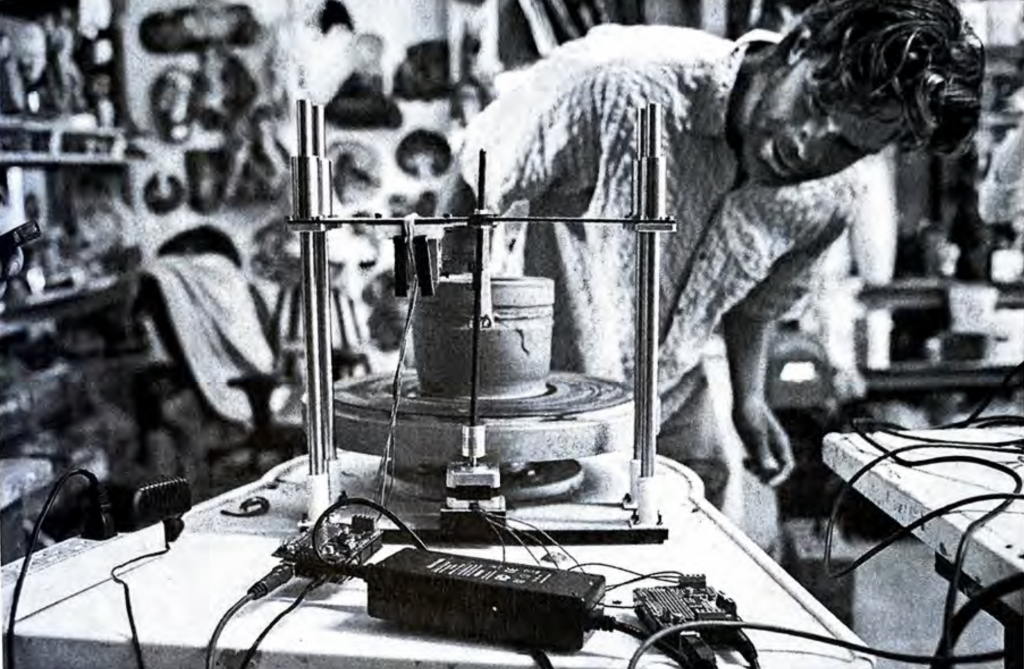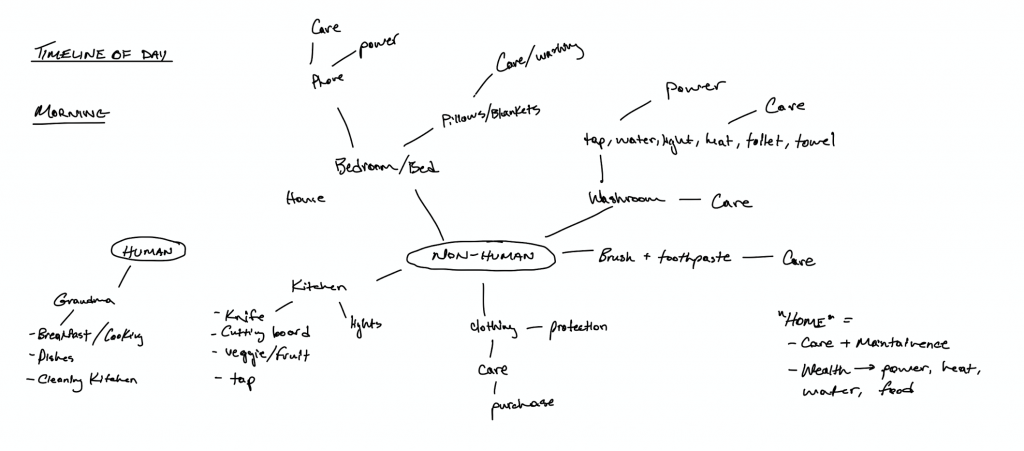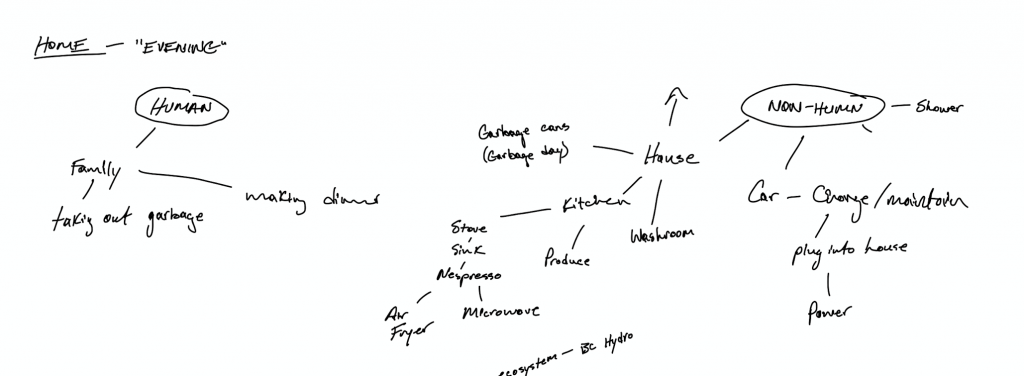Prompt Three in Design Studio tasked us with selecting a specific reading surrounding Design practice and research. The challenge was to enter into dialogue with the reading, dissecting the text and understanding the core ideas, then taking it further to realize an outcome through making.
Going into this prompt I was asking a series of questions around my work such as; “How can we collaborate better?” And “What value does collaborative work add to the creative process?”. I choose Fabulating in Practice by Daniela Rosner, a chapter from her book Critical Fabulations. This specific article explores a few of Daniela Rosner’s projects that highlight untold and marginalized narratives in the design / industrial process. Most notably, she explores the relationship between the Human and Non-Human, and the connections required between the two.

Above is an image pulled from Rosner’s article. The project was called ARC, put together by Design Technologist Hidekazu Saegusa, Photographer Thomas Tran, and ceramic artisans John Ellefson and Adrian Miller, as well as Rosner herself. This project was collaboration between the aforementioned Human participants and ARC, the machine or the Non-Human collaborator, a device that the team developed that would output (print) ceramic material based on the sounds and movement in the environment. It would perform with the Humans in it’s environment.
This project made me consider the Non-Humans that I perform with in my own practice. My laptop, my DSLR camera, my printer and scanner are branches of my process. I was curious as to what the difference is between collaborating with a space or object or simply “using” the space or object. My instructor Cameron Neat pushed me to look at my studio space at Emily Carr and ask “what could be created with the space?”
Following this deep dive into Rosner’s work, I was able to discuss some ideas with my classmates and work through different perspectives around the article. I began to question the agency of the Non-Human, what morality surrounds AI? Are the tools for design (AI systems) which help us perform and realize an outcome our collaborators? What are the Non-Humans that I engage with on a daily basis, what do they give and what do they require?
The latter question, exploring all the Non-Humans that I engage with, spread out further to think about the ecosystems and infrastructure surrounding these interactions. The aim was to find and define points of collaboration in all of these interconnected ecosystems in daily life.

The Non-Human (tools, products, services, and infrastructures) require care and maintenance across the board. They require care to be perform their function at the highest efficiency. I analyzed the relationships that exist around me on a daily basis, not simply the interaction I have with it (Me turning on the tap to attain water) but the full process of achieving the goal (bills paid to BC Hydro, that which is taken, and the journey of said water through facilities, pipelines and systems leading to my faucet to deliver water). I explored a single day in my life, from morning to evening, paying attention to what and who I interacted with and how those interactions lead to achieving my goals or realizing specific outcomes.


In this process I began to uncover the value of diversity and the value of connectivity within that diversity. Understanding the value of what this diversity brings into the space allows for the work to be that much more informed. With comprehension thrown into the mix we can cultivate good conditions for collaboration to occur it.
These exercises left me considering my process much more, from the tools to how they can be moved around, used differently, and most importantly, how they can all be used together. I aim to take a step back from this direction of research and look closer at collaboration, returning to questions such as “How can we collaborate better?” and inquiring deeper by asking “What conditions does collaboration thrive in?”